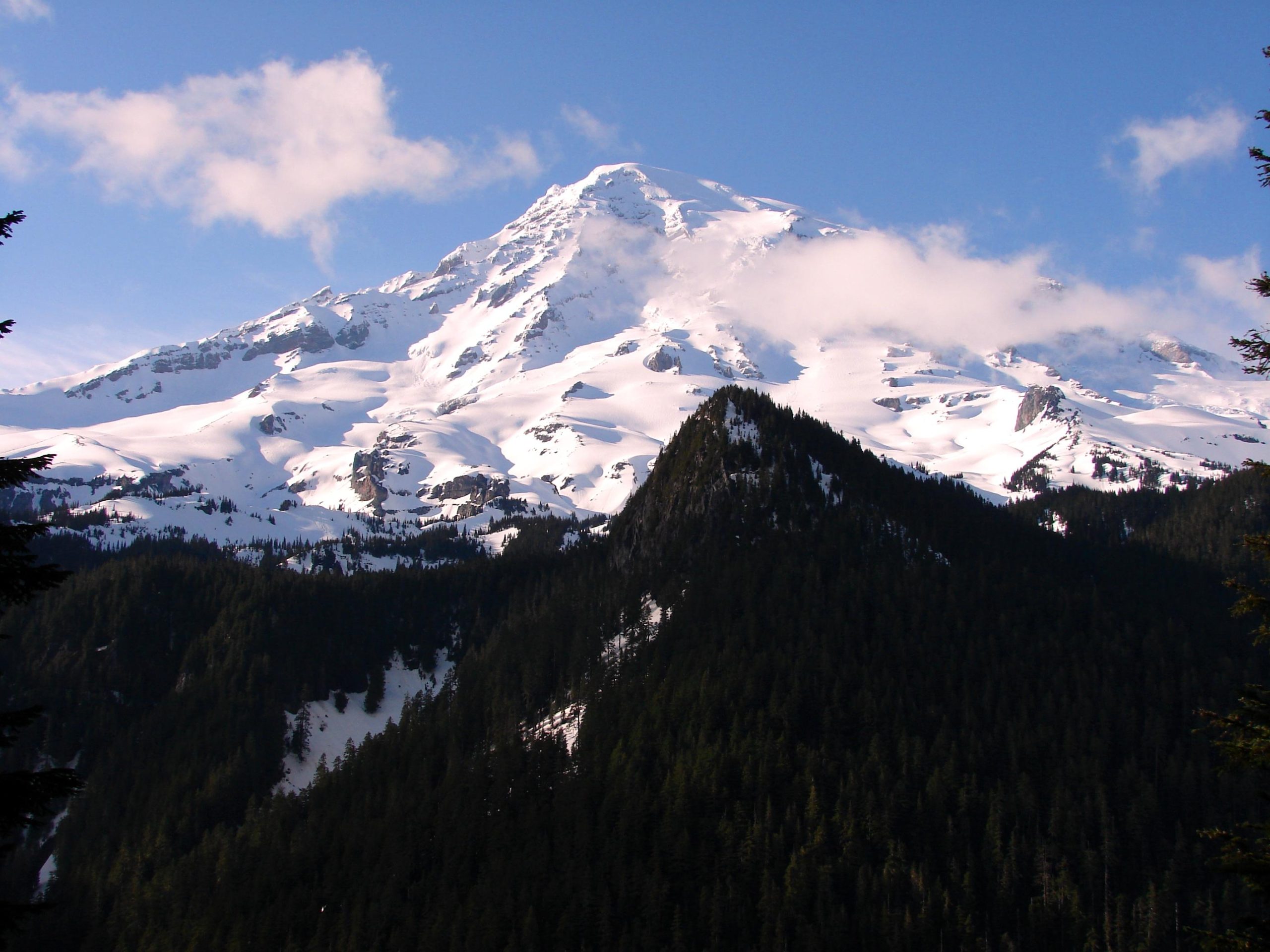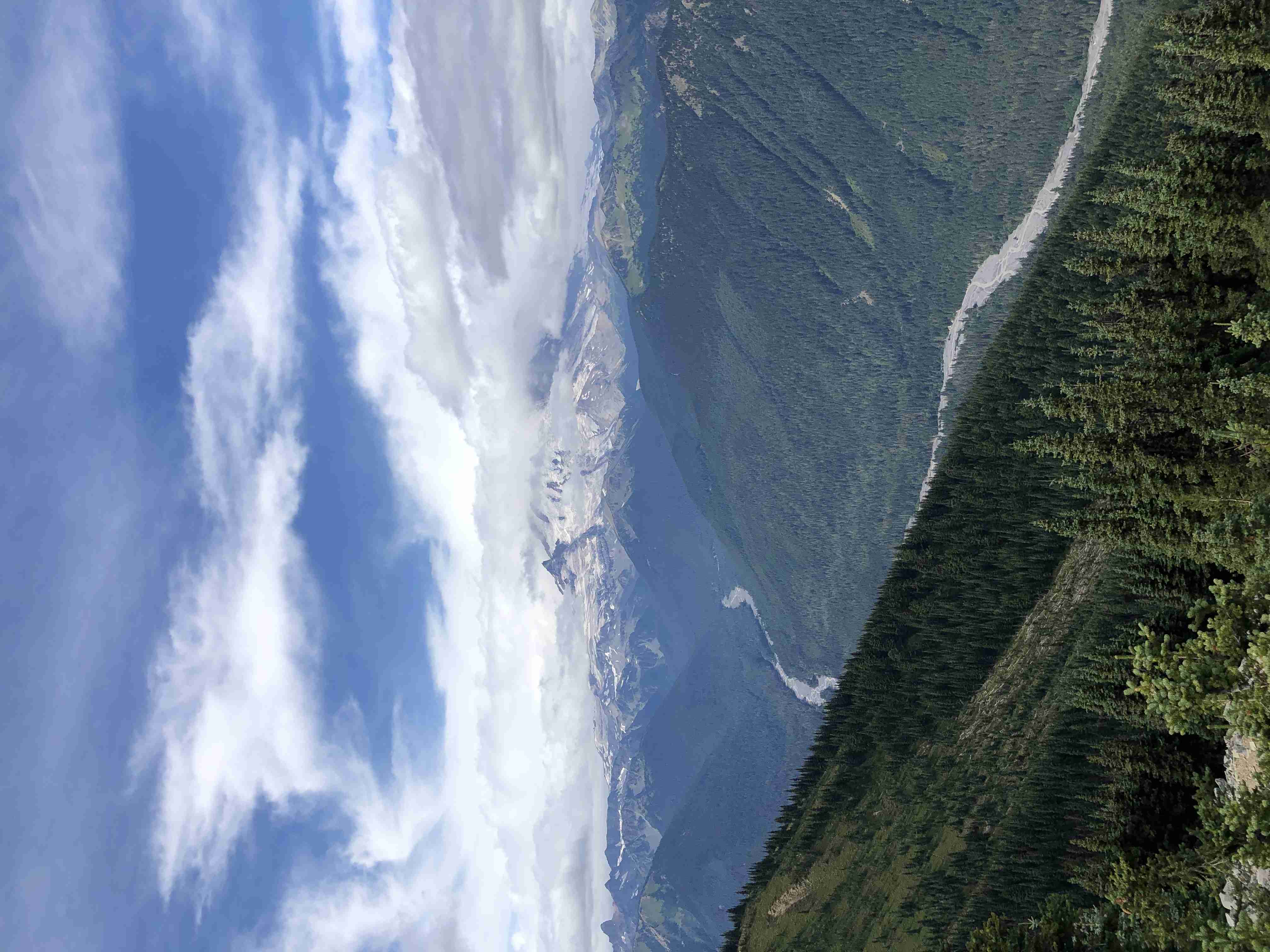The Carbon Glacier Trail in Mount Rainier National Park offers a strenuous yet rewarding hiking experience. This 17.5 to 18.4-mile round trip journey takes hikers through lush rainforests, across rivers, and up to stunning glacier views. With an elevation gain of up to 3,740 feet, the trail presents a significant challenge for even experienced hikers. The route showcases the diverse ecosystems of Mount Rainier, from old-growth forests to alpine meadows, culminating in breathtaking views of the Carbon Glacier and Mount Rainier’s imposing north face.
What is the Length of the Carbon Glacier Trail?

The Carbon Glacier Trail presents a formidable challenge with its impressive length:
- Total distance: 17.5 to 18.4 miles round trip
- Key segments:
- Initial 5 miles along the old Carbon River Road
- Crossing over the Carbon River via seasonal foot log or suspension bridge
- Path through montane rainforest in the Carbon River Valley
- Final ascent to the Carbon Glacier overlook
This lengthy trail offers hikers a diverse experience, transitioning from dense forests to open vistas. The journey begins with a 5-mile trek along the old Carbon River Road, which can be hiked or biked. As you progress, you’ll encounter various landmarks and challenges, including river crossings and changes in elevation.
How Difficult is the Carbon Glacier Trail?

The Carbon Glacier Trail is rated as hard or strenuous due to several factors:
- Length: 17.5 to 18.4 miles round trip
- Elevation gain: 1,800 to 3,740 feet
- Highest point: Approximately 3,500 to 3,600 feet
- Terrain challenges:
- Old growth rainforest navigation
- River crossings on log or suspension bridges
- Areas affected by washouts and rock debris
| Difficulty Factor | Details |
|---|---|
| Trail Length | 17.5 – 18.4 miles |
| Elevation Gain | 1,800 – 3,740 feet |
| Highest Point | 3,500 – 3,600 feet |
| Terrain | Varied and challenging |
Hikers should be prepared for a range of obstacles, including seasonal changes in river courses, potential rock and ice fall from the glacier, and the need to navigate through areas with fallen trees and rocky scrambles. The trail’s difficulty is compounded by its length, requiring good physical conditioning and ample preparation.
When is the Best Time to Visit Carbon Glacier Trail?
The optimal window for hiking the Carbon Glacier Trail is from early May to late November. This period offers the best conditions for tackling this challenging route:
- Spring (May):
- Ideal for conditioning
- Mild temperatures
-
Fewer crowds
-
Summer:
- Warmer weather
- Potential for wet conditions due to rainforest environment
-
Peak wildflower blooms in Moraine Park
-
Fall (September to November):
- Cooler temperatures
- Reduced crowds
- Pleasant hiking conditions
During these months, the trail is generally snow-free, making it more accessible and safer for hikers. However, it’s crucial to be prepared for potential river crossings and trail changes due to flooding and erosion, which can occur throughout the hiking season.
What are the Parking Options for Carbon Glacier Trail?
Parking for the Carbon Glacier Trail is available at the Carbon River Entrance of Mount Rainier National Park. Here’s what you need to know:
- Fees:
- National Park Pass required
-
Standard entrance fee: Approximately $35 for a 7-day pass per private vehicle
-
Capacity:
- Specific parking capacity information is not available
-
Early arrival recommended, especially during peak season
-
Regulations:
- Bicycles allowed on the old road bed from the entrance to Ipsut Creek Campground
- No bicycles permitted beyond the campground
- Backcountry permits required for camping at designated sites along the trail
It’s advisable to plan your arrival early, particularly during busy summer months, to secure parking and avoid potential crowding at the trailhead.
What Should Hikers Expect on the Carbon Glacier Trail?
The Carbon Glacier Trail offers a diverse and challenging hiking experience:
- Initial Road Section:
- 5-mile hike or bike along the old Carbon River Road
-
Relatively flat terrain, good for warming up
-
River Crossings:
- Seasonal foot log or suspension bridge over Carbon River
-
Potential for multiple smaller stream crossings
-
Forest Hiking:
- Dense, old-growth rainforest in the Carbon River Valley
-
Lush vegetation and potential wildlife sightings
-
Elevation Gain:
- Significant ascent as the trail progresses
-
Challenging sections with steep climbs and rocky terrain
-
Glacier Views:
- Stunning vistas of Carbon Glacier and Mount Rainier’s north face
-
Opportunity for unique photographs and memorable experiences
-
Weather Considerations:
- Potential for rapid weather changes
- Prepare for rain, even in summer months
Hikers should be well-prepared with appropriate gear, including sturdy hiking boots, rain gear, and ample water and food supplies. The trail’s length and difficulty make it crucial to start early and maintain a steady pace to complete the round trip safely.
How Can Hikers Prepare for the Carbon Glacier Trail?
Proper preparation is key to a safe and enjoyable experience on the Carbon Glacier Trail:
- Physical Conditioning:
- Build endurance with long day hikes
- Practice hiking with a loaded backpack
-
Focus on cardio and leg strength exercises
-
Gear Checklist:
- Sturdy, waterproof hiking boots
- Layered clothing for variable weather
- Rain gear (jacket and pants)
- Trekking poles for stability
- First aid kit
- Navigation tools (map, compass, GPS)
- Headlamp or flashlight
-
Emergency shelter (space blanket or bivy sack)
-
Food and Water:
- Pack more food than you think you’ll need
- Bring a water filtration system or purification tablets
-
Carry at least 3 liters of water per person
-
Trail Information:
- Check current trail conditions with park rangers
- Review recent trip reports from other hikers
-
Familiarize yourself with the route and potential hazards
-
Safety Precautions:
- Inform someone of your hiking plans
- Be prepared to turn back if conditions deteriorate
- Carry a whistle and know emergency signals
By thoroughly preparing and respecting the trail’s challenges, hikers can maximize their enjoyment of the Carbon Glacier Trail’s natural beauty and unique features.
What Wildlife Might Be Encountered on the Carbon Glacier Trail?
The Carbon Glacier Trail traverses diverse ecosystems, offering opportunities for wildlife encounters:
- Large Mammals:
- Black bears
- Elk
-
Mountain goats (at higher elevations)
-
Small Mammals:
- Marmots
- Pikas
-
Chipmunks and squirrels
-
Birds:
- Varied thrush
- Stellar’s jay
- Clark’s nutcracker
-
Potential sightings of raptors like eagles or hawks
-
Amphibians:
- Various frog and salamander species in wet areas
Hikers should practice responsible wildlife viewing:
– Maintain a safe distance (at least 100 yards from bears and wolves, 25 yards from other wildlife)
– Never feed wild animals
– Store food properly to avoid attracting wildlife to campsites
– Make noise while hiking to avoid surprising animals
Remember, you are a visitor in their habitat. Respect wildlife and their environment to ensure a safe and ethical hiking experience.
The Carbon Glacier Trail on Mount Rainier offers a challenging but rewarding adventure for experienced hikers. With proper preparation and respect for the natural environment, this trail provides unforgettable views and a true wilderness experience in one of America’s most iconic national parks.
